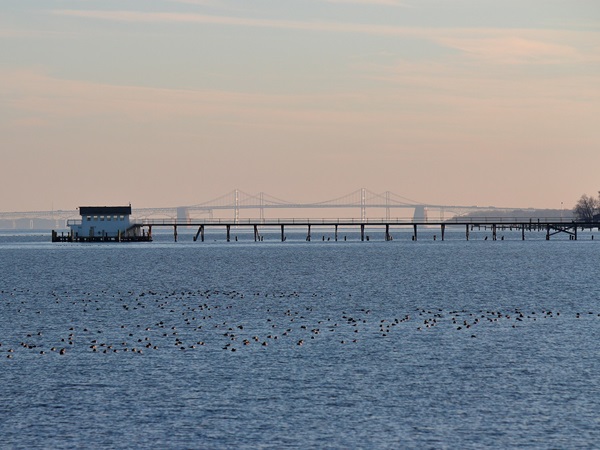BALTIMORE, MD—The Chesapeake Bay’s dead zone, an area of hypoxia where low oxygen levels can’t sustain life, was about average in size in 2024, according to a release from the Chesapeake Bay Foundation. The annual report, released by the EPA’s Chesapeake Bay Program, comes as leaders in the region prepare to meet in December to discuss the Bay’s cleanup efforts beyond the 2025 deadline.
Every year during the warmer months, parts of the Chesapeake Bay and its tidal rivers experience dead zones. These areas are uninhabitable for fish, blue crabs, oysters, and other aquatic life due to low oxygen levels, a result of excessive algae growth fueled by nitrogen and phosphorus pollution. These algae blooms thrive in warm temperatures, cloud the water, and consume oxygen as they decompose.
Weather conditions can impact the size of the dead zone from year to year. Heavy rainfall can contribute to pollution runoff into the Bay, while high summer temperatures, exacerbated by climate change, and light winds can create ideal conditions for algae growth.
Despite recent progress, states surrounding the Bay will not meet their pollution-reduction goals by the 2025 deadline. This challenge will be addressed by regional governors and other leaders at the Chesapeake Executive Council meeting on December 10 in Annapolis. The meeting will be crucial for charting a course for Bay cleanup beyond the 2025 deadline.
The dead zone is monitored by the Maryland Department of Natural Resources and the Virginia Institute of Marine Science. This year’s findings mark an average size dead zone, in comparison to the smallest dead zone recorded in 2023 since monitoring began in 1985.
Alison Prost, CBF Vice President for Environmental Protection and Restoration, emphasized the need for collaborative action across state lines to reduce pollution and improve the Bay’s health.
“The only way to shrink the Chesapeake Bay’s dead zone is by working across state lines,” Prost stated. “Too much pollution from six states and Washington, D.C., still flows into the Bay and fuels this degrading phenomenon that chokes underwater life.”
As the 2025 deadline nears, Prost stressed the importance of leadership and commitment from Bay restoration partners. She urged leaders to recommit to the Bay restoration partnership and update the Chesapeake Bay Agreement’s goals by the end of 2025 at the December meeting.
This article was written with the assistance of AI and reviewed by a human editor.
Photo via Pixabay
Do you value local journalism? Support NottinghamMD.com today.

